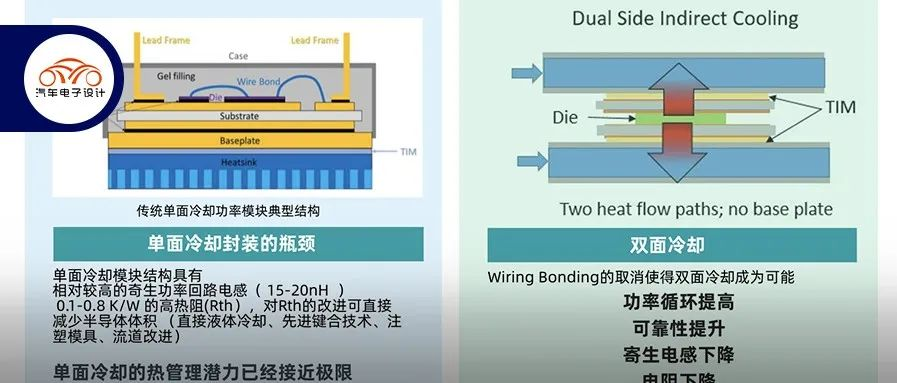Author: Zhu Yulong
I wrote a article titled “Comprehensive Review and State of Development of Double-Sided Cooled Package Technology for Automotive Power Modules” with my former colleague Liu Ming, which not only summarizes some early concepts and designs of double-sided cooling technology, but also combs through the parameters of commercial power modules. The original article is lengthy, so I have several points to summarize here:
-
Double-sided cooling became possible only after the Wire Bond technology in power module was replaced.
-
With the improvement of cooling technology, there has been a decrease in power density, reliability, parasitic inductance, and resistance.
In situations where differentiation is more varied, power module packaging technology has become something that many companies want to master.
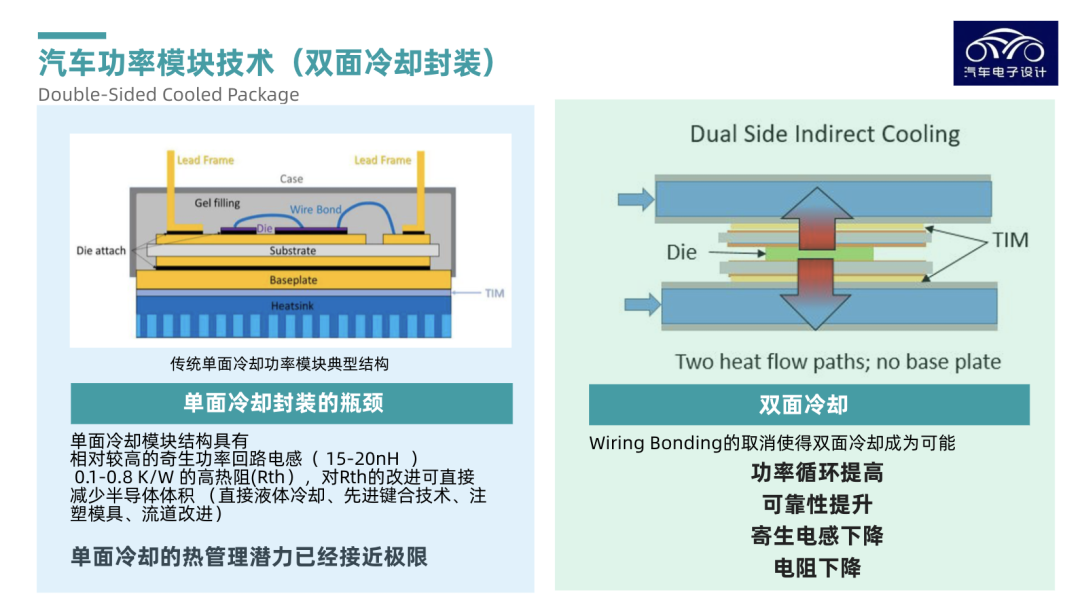
Early technology
Double-sided cooling was first proposed in the 1990s, and both academia and industry have been studying it. It was implemented in inverters for mass-produced electric vehicles in 2008. Since the mid-2010s, this design method has become increasingly popular, and more and more automotive companies and Tier1 suppliers are adopting this packaging technology.
Looking at the entire development path, it can be mainly divided into several stages:
-
The first stage from 1995 to 2010: Early on, it was mainly high-efficiency and large companies’ laboratories that explored wire-free and planar packaging to achieve top cooling paths for power modules.
-
The second stage from 2001 to 2015: Large companies began to gradually break through commercialization of double-sided liquid cooling research and development.
-
The third stage starting from 2015: Mass commercialization, where many double-sided liquid-cooled modules from different suppliers are applied in electric vehicles.
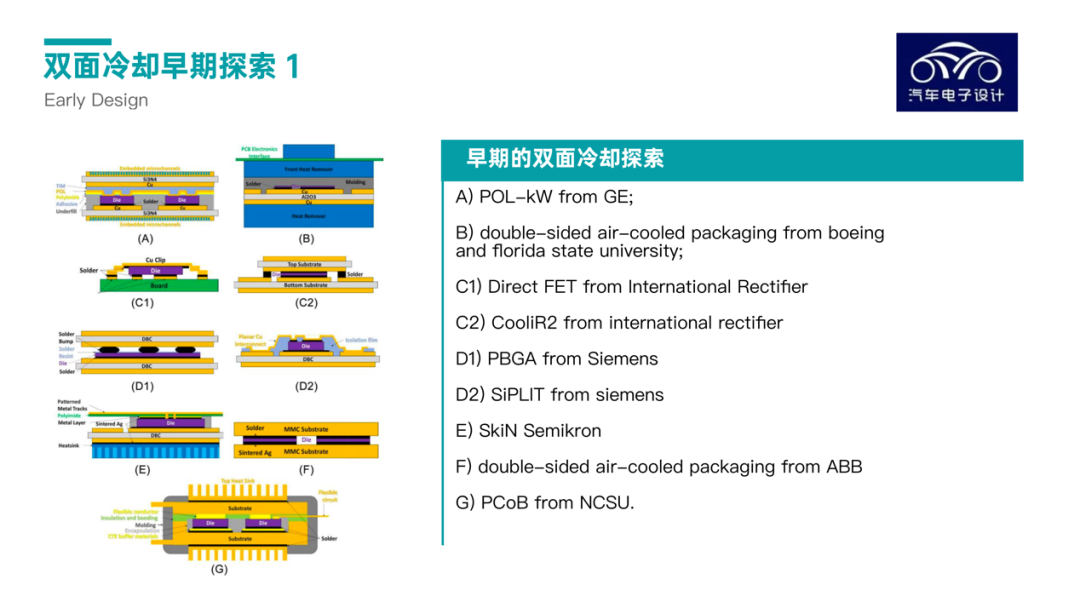
We can see that early modules were based on Si modules of IGBT, and exploration of SiC’s application in the existing design began in 2012-2016.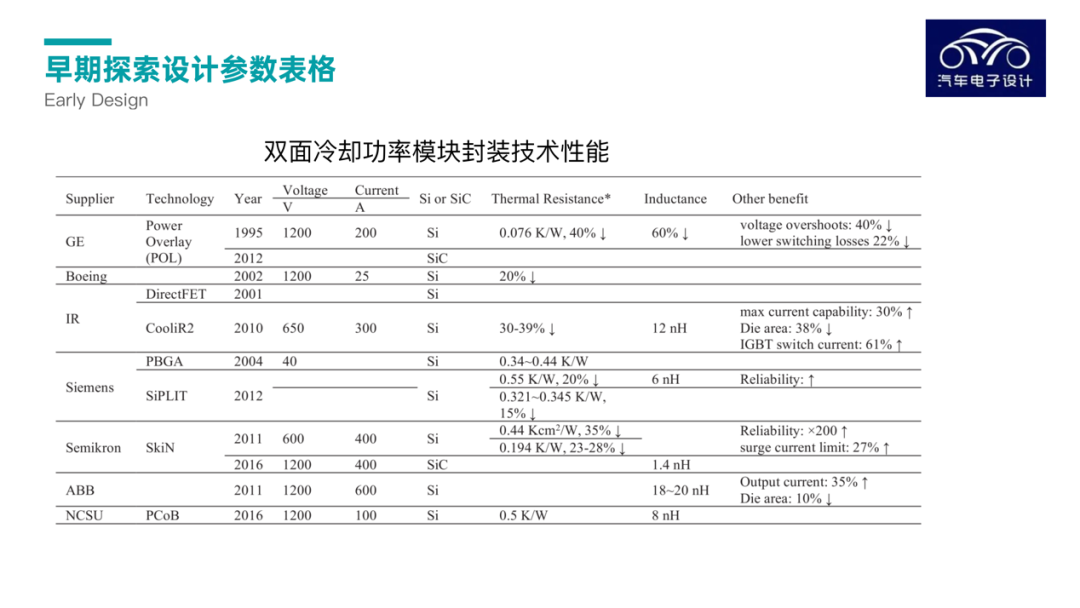
In the second phase, more companies began to explore early commercialization.
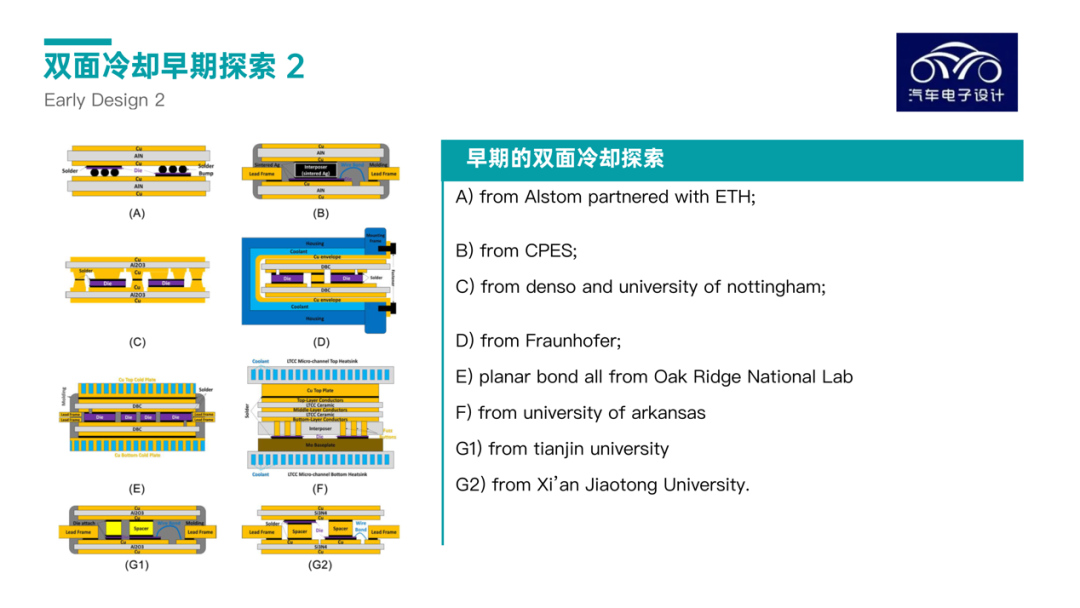
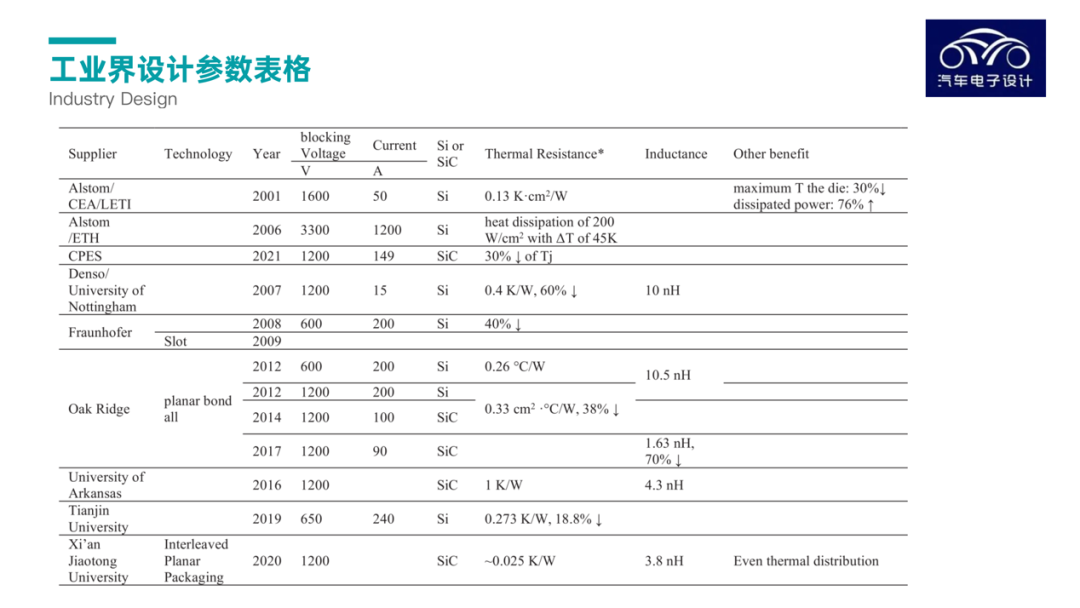
From the perspective of the automotive industry, it mainly focuses on product design optimization. We have seen many attempts by automotive companies and Tier 1 in this field.
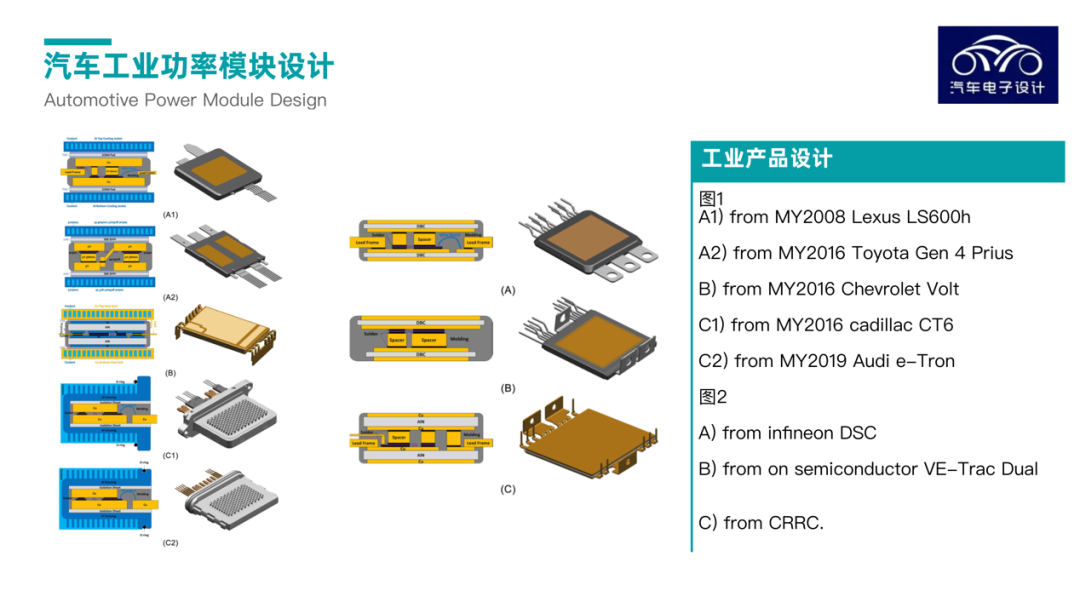
Power modules have greatly improved from 1in1, 2in1 to 6in1 in terms of thermal resistance, parasitic inductance, and maximum temperature.
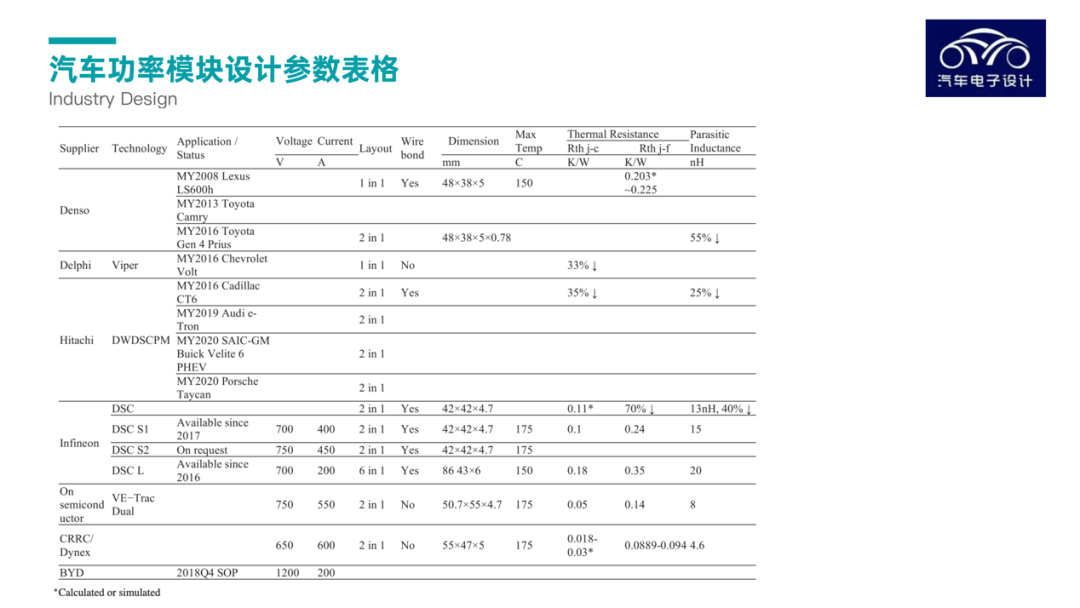
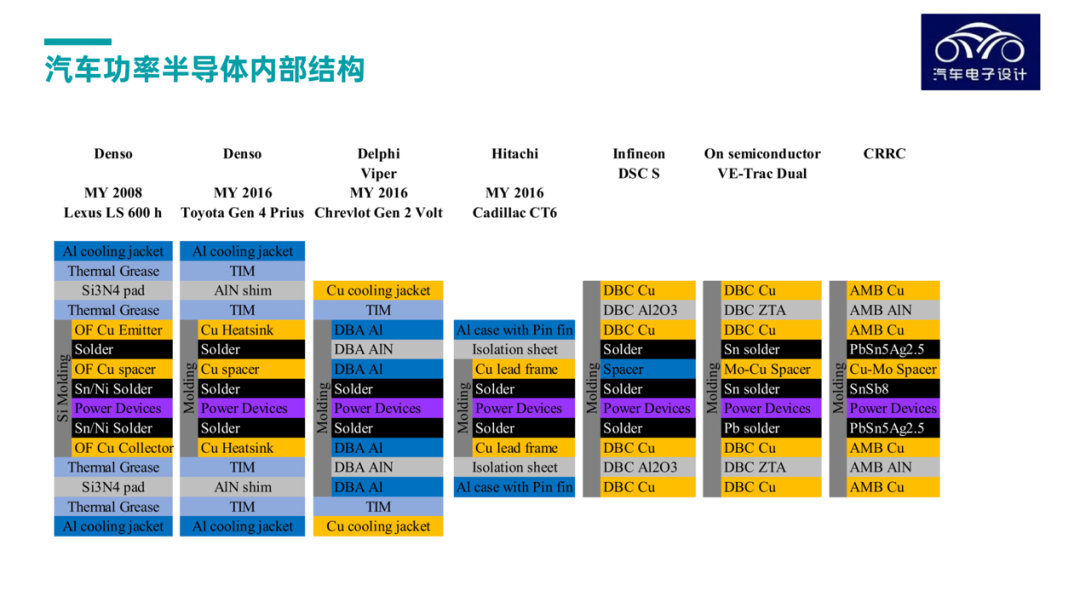
The original author Liu Ming emphasized here that although General Motors did not sell well in electric vehicles, it simultaneously launched three different designs of inverters in 2016, including two double-sided cooling modules. This is a sincere technical and commercial behavior of a big fool.
The Development of Double-sided Cooling Power Modules
Effective thermal management is very important for power modules (Si and SiC) in electric vehicle applications to achieve higher power density and reliability. Compared with traditional single-sided cooling power module packaging, double-sided cooling can significantly improve heat dissipation, semiconductor utilization, and electrical parasitic effects.The current focus of our work is to improve the performance, reliability, and cost of power modules by utilizing planar interconnects, advanced materials, and updated processes. As power module double-sided cooling materials and structural technologies mature, the design of power modules will benefit from the standardization of packaging dimensions and shape. This will enable faster development and lower costs of inverters, while still achieving further innovation within the module itself. This standardization, along with the multi-physical field design of double-sided cooling, can enhance the comprehensive characteristics of inverter reliability, cost, efficiency, and size.
The figure 9 below presents a great summary of the development path for large-scale exploration and subsequent mass production.
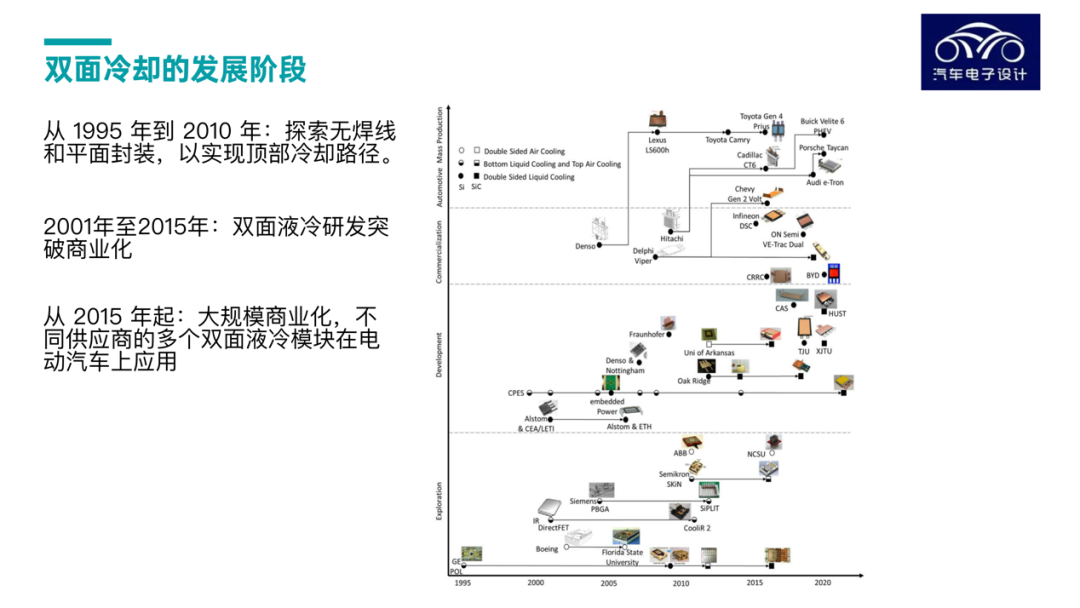
Tesla has always been a leader in power density.
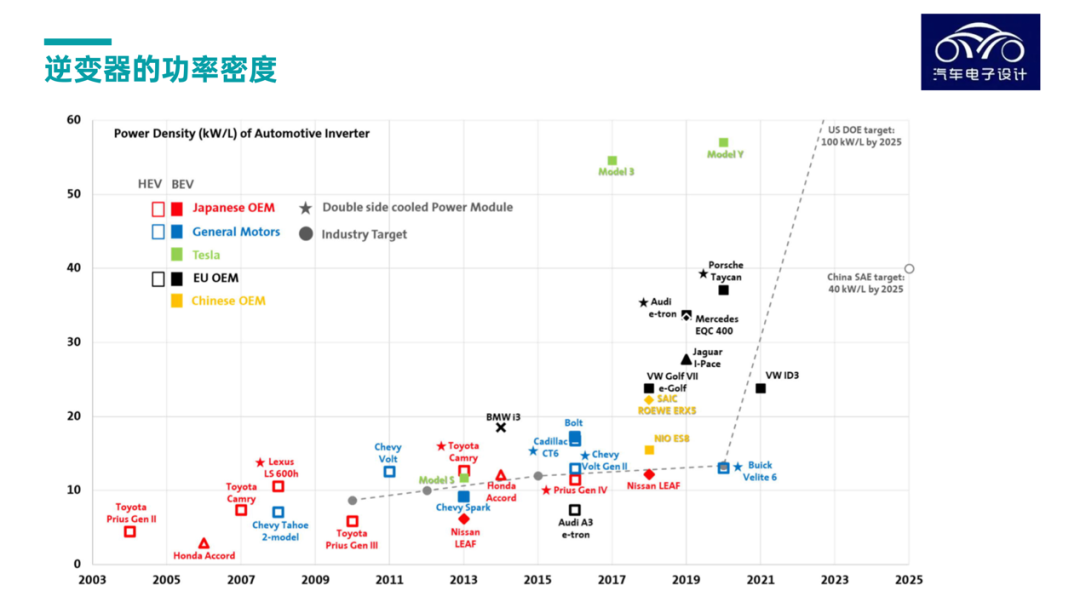
Liu Ming also mentioned that the next step for double-sided water cooling should be direct double-sided water cooling, otherwise TIM will offset some of the benefits of double-sided water cooling design.
Currently, the maturity of silicon carbide is relatively poor and the packaging form has regressed to single tube. However, from an integration perspective, in the long run, it should still be similar to the single or double-sided full-bridge packaging like HPD. Industry insiders still do not believe that double-sided water cooling will become a standard feature of silicon carbide like AMB and sintered silver.
Moreover, there is a problem of chaotic power module packaging supply chain, with chip-to-OEM factories all working as customers and competitors, which seems to be unsolvable in the short term.
Summary: The original article also wrote a lot about comparisons of advantages and details, which I recommend taking a look at. I think Ming Liu’s paper is well written. Of course, I personally don’t care much about the details, mainly focusing on the historical development and design trends, so I have selected some parts that interest me.
Finally, you can guess whether the above-mentioned Ruike uses single-sided cooling or double-sided cooling.
This article is a translation by ChatGPT of a Chinese report from 42HOW. If you have any questions about it, please email bd@42how.com.
